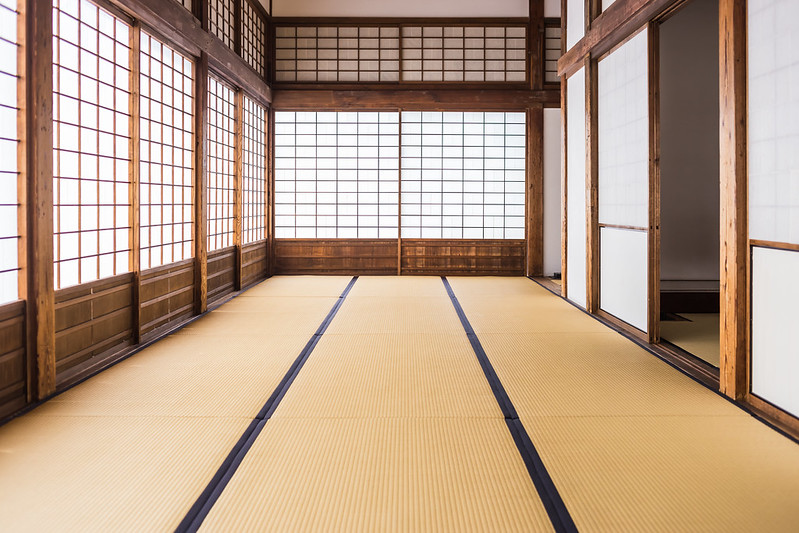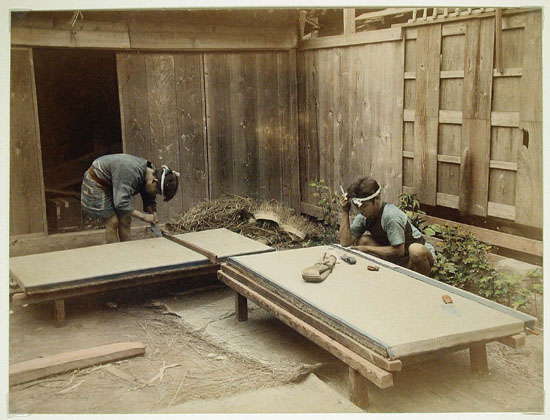
Traditional Japanese Tatami Mats
Tatami (畳) is a type of flooring used for traditional Japanese rooms. Tatami, or mats, were originally made using rice straw to form the core. More modern versions of tatami are usually made from either polystyrene foam or compressed wood chips, and they come in standard sizes with or without cloth edging.
Tatami was derived from the word tatamu which means to pile or to fold. The earlier forms of tatami were made thin and could be piled in layers or folded when not in use. During the Heian period, when the architectural style used by Japanese nobility was at its peak, huge rooms were mainly made of wood. Tatami was used as seating for the highest ranking aristocrats and was considered a luxury item.
 The shoin-zukuri architectural style became popular during the Kamakura period for residences of priests and samurai with their rise to power.
The shoin-zukuri architectural style became popular during the Kamakura period for residences of priests and samurai with their rise to power.
Men making tatami mats, 1860 – ca. 1900.
It reached its peak of popularity during the Muromachi period when tatami eventually covered an entire room and “tatami” came to be known as zashiki (room spread out for sitting).
Rules for etiquette and seating were soon dictated by the arrangement of the tatami. By the 16th century, Japanese nobility and samurai slept on tatami mats known as goza while the common folk used straw mats or even loose straw for bedding. By the end of the 17th century, tatami mats were also used by commoners. Today, most Japanese homes still often have tatami-floored rooms called nihonma or washitsu (Japanese-style rooms).
Itsukushima Shrine, on the island of Miyajima, is dedicated to the three daughters of Susano-o no Mikoto, the Shinto God of seas and storms, and Amaterasu, the sun goddess who is also the deity of the Imperial household. It is known for its floating torii and the five story pagoda, Senjokaku, The Hall of One Thousand Tatami Mats.
It was built in 1587 at the request of one of Japan’s great unifiers, Toyotomi Hideyoshi. It was meant to be a place for the faithful to chant Buddhist sutras to console souls lost in the war. The hall is sprawling with posts and beams holding up the ceiling. Senjokaku is an architectural wonder that is truly awe inspiring. It takes about one thousand mats to completely cover the entire hall. Senjokaku is just one of the amazing places to visit when in Japan.

